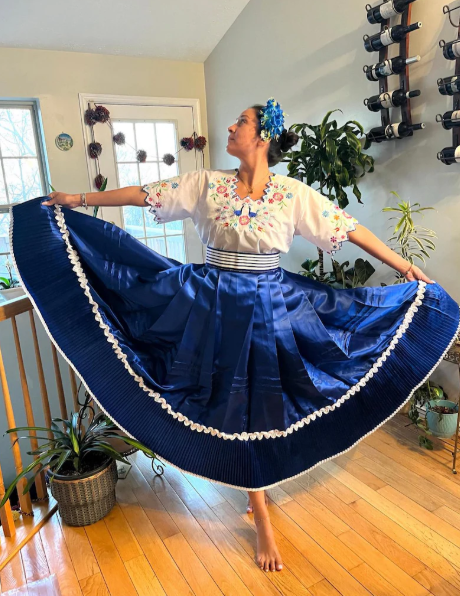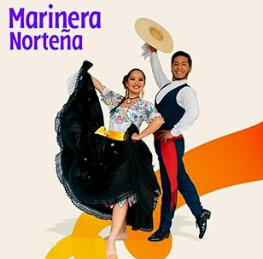Picture a dance that pulses with Peru’s soul, each step whispering tales of love and tradition. The marinera dance, Peru’s national gem, is a sensory journey that wraps you in elegance and passion. Join me to uncover its origins, meaning, how it’s danced, and how to bring a piece of this magic home.
Who Should Fall in Love with the Marinera Dance?
If you’re curious about Peruvian culture, love dancing, or want to dazzle at a party with unique moves, the marinera dance is calling your name. Are you a cultural explorer, a tradition enthusiast, or someone craving an authentic experience? This is for you. When choosing marinera-related products—like traditional costumes, music, or dance lessons—look for quality: authentic Peruvian craftsmanship with lightweight yet durable fabrics, intricate embroidery that tells stories, and music that transports you to a plaza in Trujillo. Pick items that connect you to the heart of this dance, something that feels like Peru’s pride and joy.
Where to Buy Marinera Dance Products?
Below, I’ve handpicked some options for you to bring the marinera dance into your life. These authentic products capture the spirit of this dance, perfect for feeling Peru from wherever you are.
A Journey Back: The Origins of the Marinera Dance
Close your eyes and step into the dusty streets of colonial Peru, where the sun warms the earth and the air hums with guitars and cajón drums. Here, the marinera dance was born, a child of the zamacueca, blending Indigenous, African, and Spanish roots like a perfect plate of Peruvian ceviche—distinct flavors that together are unforgettable. The lively steps came from African slaves, the melodies from Spanish strings, and the soul from our native peoples. By the late 19th century, after the war with Chile, Peruvians named it “marinera” in honor of the Navy, with the scent of sea salt and the sound of waves shaping this cultural treasure.
Who Created the Marinera Dance?
Pinpointing one creator of the marinera dance is like asking a river who made it—it’s a gift from many. Still, Abelardo Gamarra, a Peruvian writer and musician, gets credit for naming it in the 1870s. Known as “El Tunante,” with his mustache and hat, he saw the dance as a mirror of our identity and gave it the name that echoes in every festival today. It wasn’t one person but a whole nation weaving its story, step by step.
The Heart of the Dance: What Does the Marinera Mean?
The marinera dance is all about courtship, a flirty elegance that makes you swoon. Picture a sunny plaza, filled with the aroma of anticuchos and the chatter of a crowd. A man in a white shirt and hat waves his handkerchief like he’s calling the wind; a woman, her skirt swaying, answers with a playful glance. It’s a game of love, a “I want you, but not too much” danced with grace and mischief. Every turn, every step, is a wordless conversation, a blend of respect and passion that beats in Peru’s heart.
How Do You Dance the Marinera?
Dancing the marinera is like writing poetry with your feet. It starts with an invitation: the man approaches, handkerchief raised, and the woman accepts with a subtle hip sway. Then come the steps: the “cepillado,” where your foot brushes the floor like sweeping dust, and the “zapateo,” a rhythmic tap that echoes distant drums. The handkerchief floats, bodies draw near then pull away, always in sync with the music. It’s not just technique—it’s feeling; you’ve got to pour your heart into it for the marinera to shine.
Three Flavors of Marinera: The Types You Need to Know
The marinera dance isn’t one-size-fits-all—it’s a trio of sisters, each with her own vibe. The Lima marinera, from the capital, is smooth like a lemon sigh, with delicate moves that recall criollo salons. The northern marinera, from Trujillo, is pure fire: fast, flirty, with a tap that roars like a galloping chalán horse. And the serrana marinera, from the Andean highlands, mixes coastal flair with Quechua spirit, with flutes and costumes painted by the mountains. Each one’s a gem, like Peru serving you a feast of dances.
The Handkerchief: The Secret Soul of the Marinera
If the marinera dance were a person, the handkerchief would be its smile. This little piece of cloth isn’t just decoration—it’s the dance’s language. The man waves it to woo, the woman twirls it to reply, and together they weave a story of gestures that say more than words. It’s like a brush in the air, painting emotions: a shy “come closer,” a teasing “maybe.” Without the handkerchief, the marinera wouldn’t be the same; it’s the touch that makes it timeless.
What Did Ancient Peruvians Call the Marinera?
Before it was the “marinera,” this dance had other names, like nicknames for an old friend. It was called zamacueca, a term some say comes from the Quechua “zamiquiqui” (day of rest), though it also carries an African breeze. In the north, it was the tondero, looser and sultrier; elsewhere, the mozamala, with a cheeky charm. These names are echoes of a mestizo past, a dance that grew and changed outfits until it slipped into the marinera dress we know today.
What Do You Gain from Dancing Marinera?
Dancing marinera is a gift for body and soul. Physically, it gets you moving: it strengthens your legs, sharpens coordination, and makes your heart beat to the rhythm of the cajón. But it’s more than that—it’s an embrace of Peruvian culture, a way to say, “I’m part of this.” It connects you with others, from the laughter of a rehearsal to the cheers at a festival. Above all, it fills you with joy, that alive feeling only a great dance can give.
Trujillo Comes Alive: The Marinera Festival
To see the marinera dance in all its glory, head to Trujillo’s Marinera Festival every January. The streets burst with celebration, the scent of fried fish and ceviche mingling with the strum of guitars, as the world’s best dancers compete to rule the handkerchief. It’s like the whole city dances: kids, grandparents, everyone moves to the beat. Watching it makes you feel Peru’s pride in your bones—a spectacle that’ll have you itching to jump in and tap your feet.
The Marinera as Muse: Its Mark on Art
The marinera dance doesn’t stay on the dancefloor—it spills into paintings, poems, and songs. Artists have captured its elegance in vibrant oils, while poets compare it to an impossible romance. In music, its rhythms inspire waltzes and tunes you can’t help but hum. It even graces Peruvian films, a star that shines without speaking. This is a dance you don’t just perform—you feel it, you create it.
Take Your First Steps: How to Start with Marinera
Ready to dance? Find a Peruvian dance school or a patient teacher; if you’re far away, online videos can guide you. Start by listening to the music—let the cajón and guitar speak to you. Practice the cepillado in front of a mirror, laugh when you mess up (we all do!), and hold a handkerchief to feel part of the game. The marinera doesn’t demand perfection, just passion—so dive in and let it flow.
A Piece of Peru for You
The marinera dance is more than a performance; it’s a slice of Peru you can touch, smell, and feel. Whether you learn its steps, slip into a traditional skirt, or play marinera music in your living room, you’re bringing our land into your world. Check out the options I’ve curated below and start this journey. Because the marinera isn’t just danced with your feet—it’s carried in your heart.



